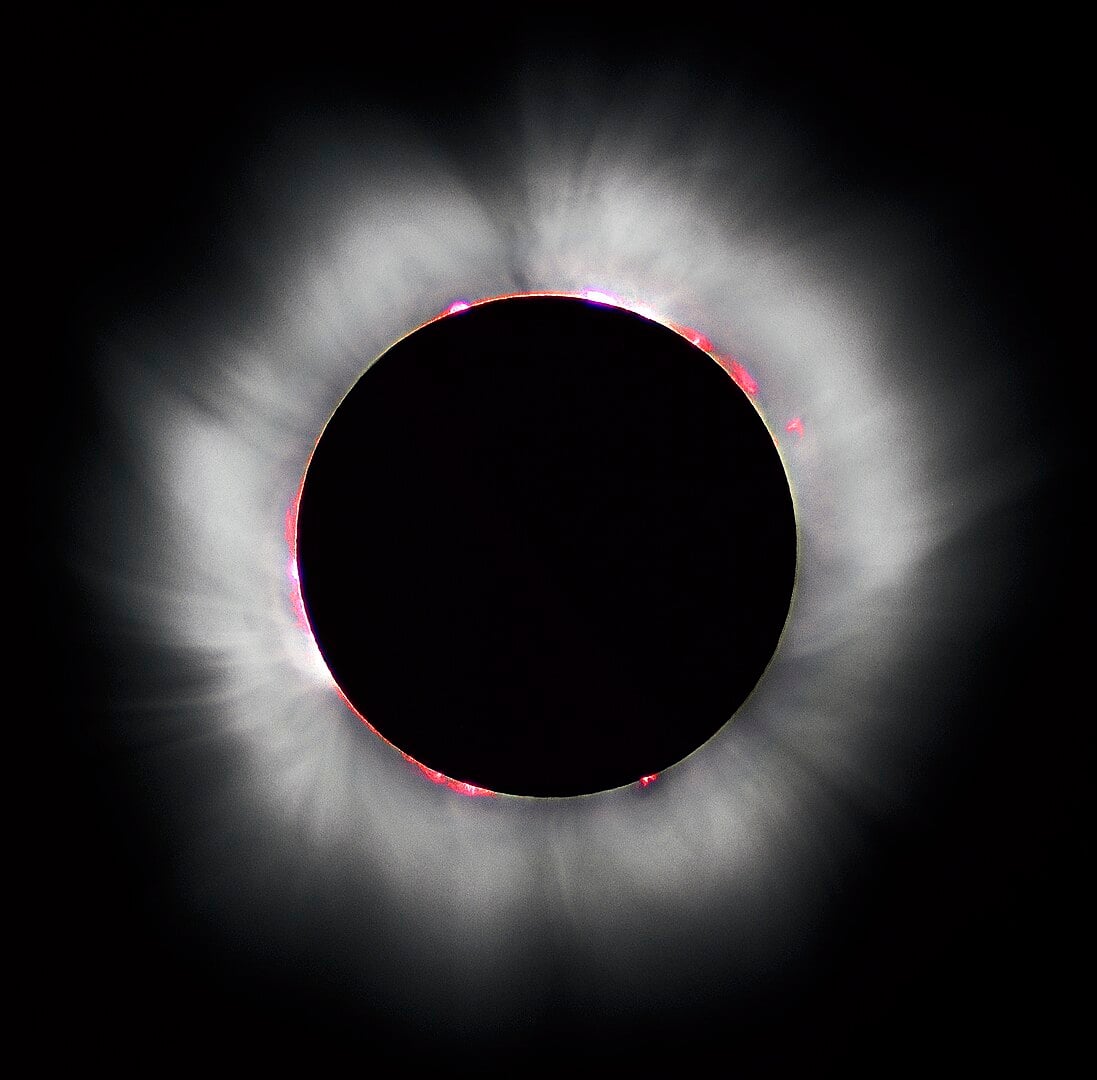There was a total solar eclipse in the UK back in 1999. I travelled down to Cornwall, a loooooong 8 hour car drive and quite typically for UK, it was cloud. For me, I either need to wait until 2090 when I will be the ripe old age of 117 or travel abroad. Even if I had seen it, I would have been able to enjoy the spectacle for just over 2 minutes! Imagine though, experiencing a total solar eclipse that lasts 48 minutes instead of the usual four minutes or so that we see on Earth. A UK led space mission plans to make this possible by creating artificial solar eclipses in space, revolutionising how we study our nearest star and potentially saving decades of waiting for natural eclipses.
The Moon Enabled Sun Occultation Mission (MESOM) proposes placing a small satellite in a carefully calculated orbit that aligns it with the Moon's shadow approximately once every 29.6 days. This ingenious approach would allow scientists to study the Sun's corona, its outermost atmosphere, in unprecedented detail, capturing the equivalent of 80 Earth based eclipses over just two years.
 Total Solar Eclipse showing the stunning outer atmosphere of the Sun known as the corona. (Credit : Luc Viatour)
Total Solar Eclipse showing the stunning outer atmosphere of the Sun known as the corona. (Credit : Luc Viatour)
The corona holds many of the Sun's deepest mysteries. This wispy, ethereal layer is only visible during total solar eclipses when the Moon blocks the Sun's brilliant disk, revealing the shimmering plasma that extends millions of kilometers into space. On Earth, total eclipses are rare treats that last mere minutes and occur only along narrow paths. Those wanting to study or just enjoy the event often travel thousands of miles and wait years between opportunities.
Understanding the corona is crucial for space weather prediction. Solar flares and coronal mass ejections, massive bursts of plasma and magnetic field, originate in this region and can disrupt satellites, power systems, and communication systems on Earth. They can also affect everything from GPS navigation to airline routes over polar regions.
MESOM would eliminate the solar eclipse waiting game or the reliance on large expensive equipment entirely. By positioning itself in the Moon's shadow, the satellite would experience artificial eclipses lasting up to 48 minutes, ten times longer than typical Earth based observations. These extended viewing periods would allow for detailed measurements impossible from our planet's surface.
"MESOM capitalises on the chaotic dynamics of the Sun-Earth-Moon system to reproduce total solar eclipse conditions in space while using the Moon as a natural occulter. The satellite would naturally pass through the darkest part of the Moon's shadow during every two of its revolutions." - Dr. Nicola Baresi from the Surrey Space Centre.
MESOM would carry a sophisticated suite of instruments including a high resolution coronal imager led by the US Naval Research Laboratory, a corona mass spectrometer from Aberystwyth University and University College London to analyse plasma composition, and a Spanish built spectropolarimeter to study the Sun's magnetic field and phenomena like sunspots and solar flares.
 Solar flare captured from Skylab. (Credit : NASA)
Solar flare captured from Skylab. (Credit : NASA)
The research team, spanning the Mullard Space Science Laboratory at UCL, Aberystwyth University, and the Surrey Space Centre, expects ESA's response about their proposal later this year. If approved, MESOM could operate for two years, providing an unprecedented opportunity for longer term study of the Sun’s corona.
This innovative approach demonsstrates how creative orbital mechanics can solve longstanding scientific challenges. Rather than building massive, expensive instruments or waiting for rare natural events, MESOM uses the Moon as a free, perfectly sized disk to block the Sun's light exactly when and where scientists need it.
If successful, MESOM will transform solar science from a field often waiting for events to happen, dependent on rare eclipses to a systematic study capable of monitoring our star's behaviour almost continuously, helping protect our increasingly technology dependent civilisation from the Sun's more violent outbursts.
Source : A Small Satellite Could See a Perfect Solar Eclipse Every Month

